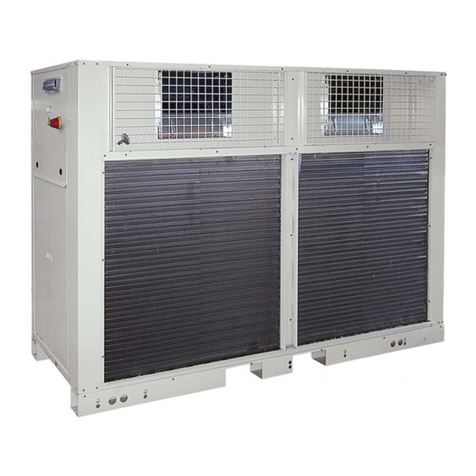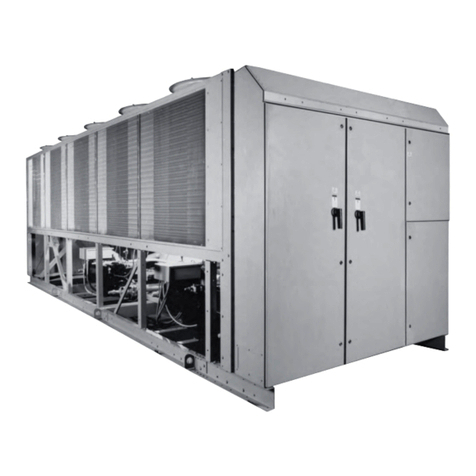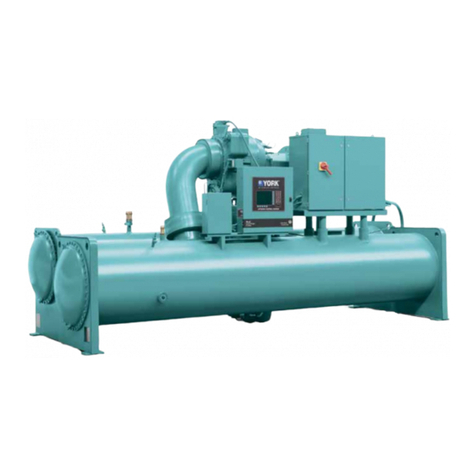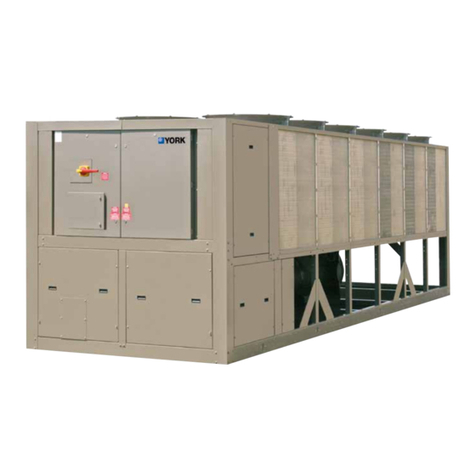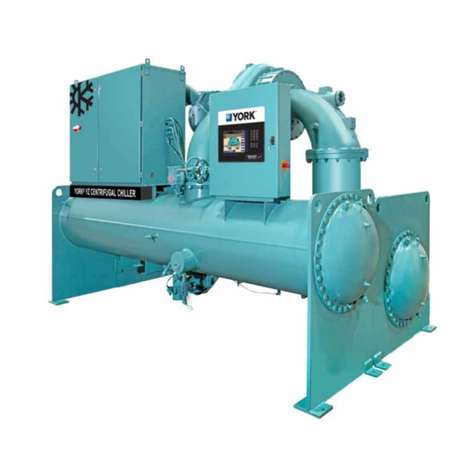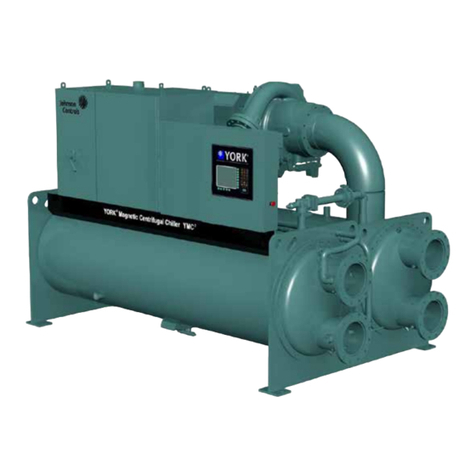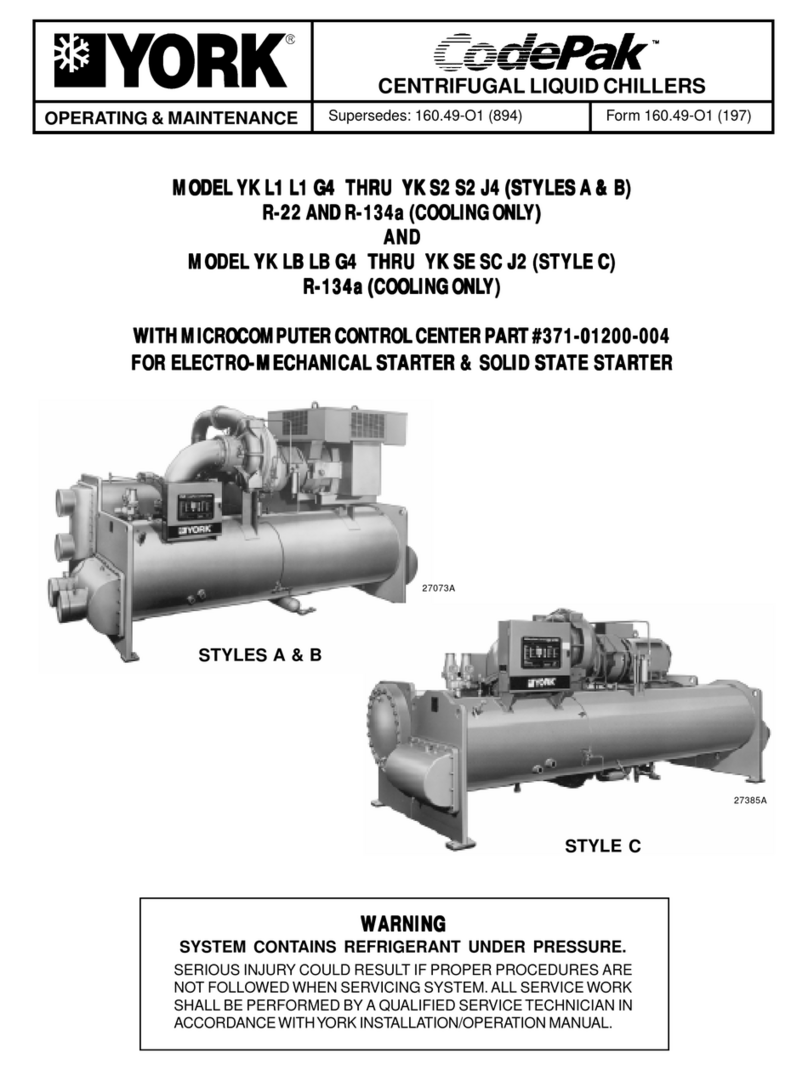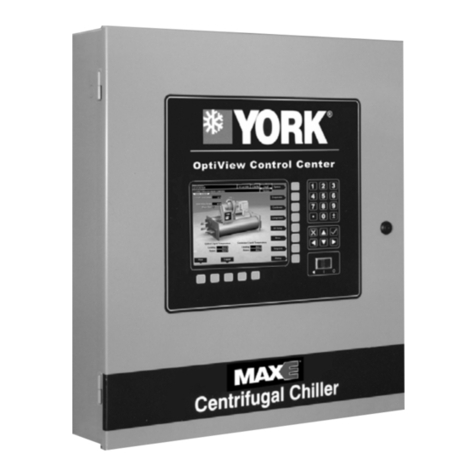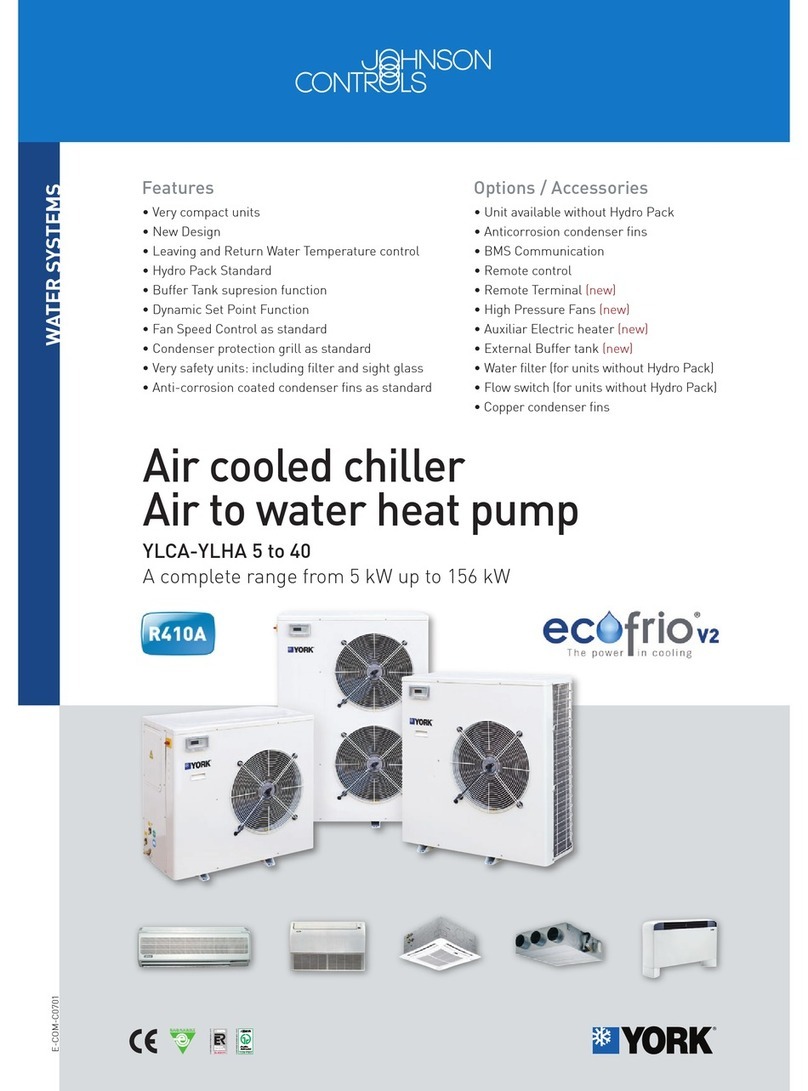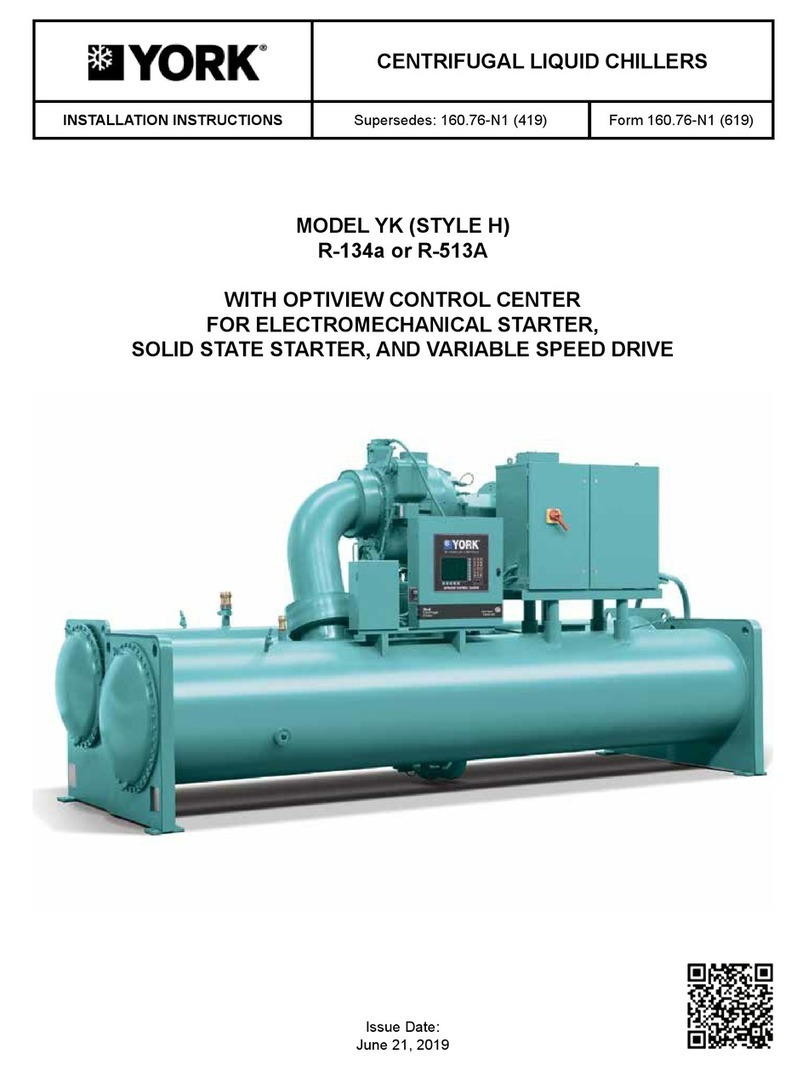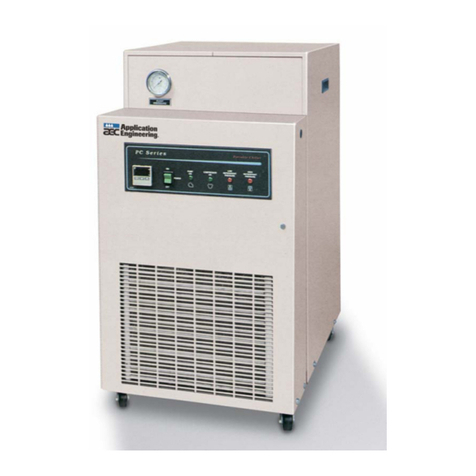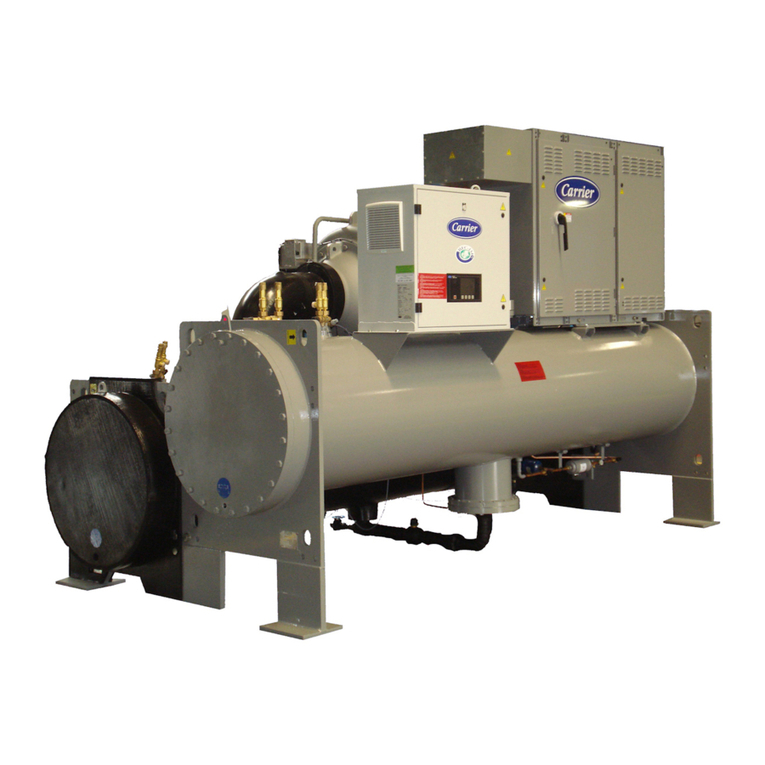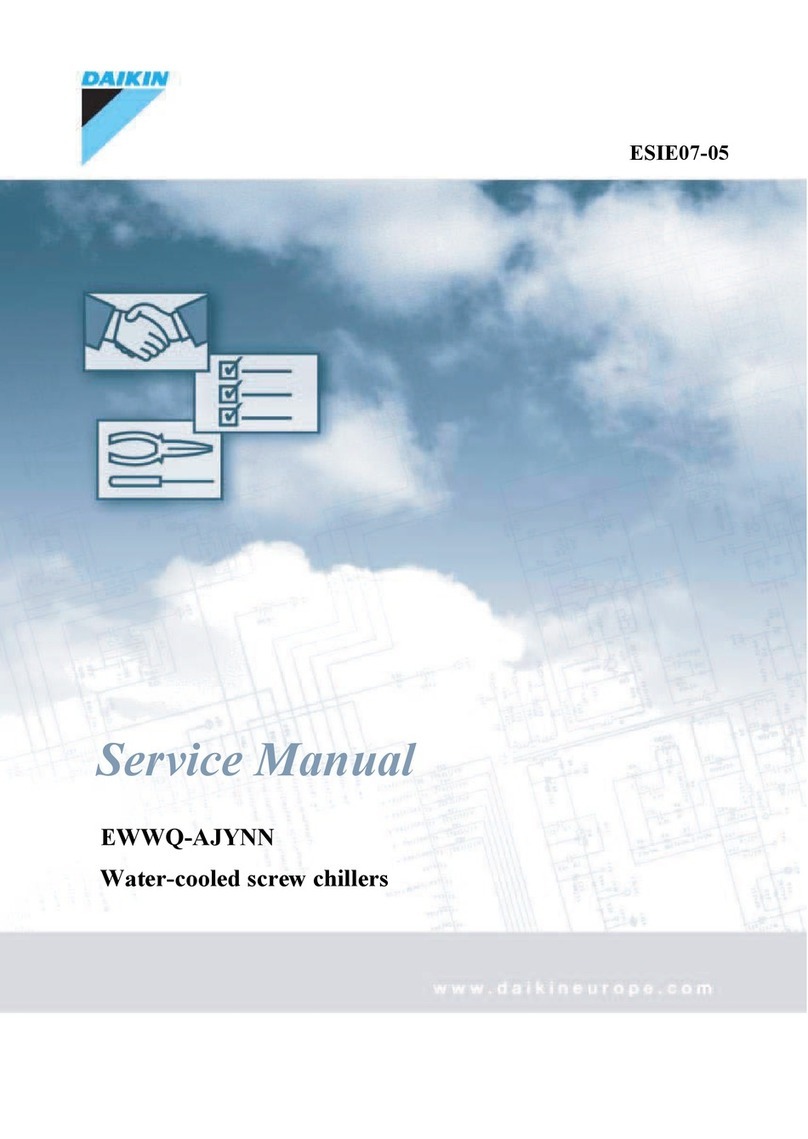
YORK INTERNATIONAL
9
FORM 160.60-O1
STANDARD DISPLAY MODE KEY MESSAGES
SETPOINT KEY MESSAGE
Chilled Liquid Temp LEAVING SETPOINT = XX.X°F
% Engine Load Limit ENGlNE LOAD LIMIT = XXX%
Pulldown Demand SETPOINT = XXXMIN @ XXX% LOAD, XXX MIN LEFT
Clock TODAY IS SUN 12:00AM XX/XX/XX
Service Interval ENGlNE SETPOINT = XXXX HRS, XXXX HRS REM
COMPRESSOR SETP = XXXX HRS, XXXX HRS REM
Daily Schedule SUN START = 00:00 AM, STOP = 00:00 AM
MON START = 00:00 AM, STOP = 00:00 AM
TUES START = 00:00 AM, STOP = 00:00 AM
WED START = 00:00 AM, STOP = 00:00 AM
THURS START = 00:00 AM, STOP = 00:00 AM
FRI START = 00:00 AM, STOP = 00:00 AM
SAT START = 00:00 AM, STOP = 00:00 AM
HOLIDAY START = 00:00 AM, STOP = 00:00 AM
Holiday S M T W T F S HOLIDAY NOTED BY *
Remote Reset Temp. Range REMOTE TEMP RESET RANGE = 00°F
Data Logger WTO AUTO PRINT INTERVAL = NOT PROGRAMMED
DISPLAY KEY MESSAGE
Chilled Liquid Temps CHILLED LEAVING=XXX.X°F; RETURN=XXX.X°F
Refrigerant Pressures EVAP = XXXX.X PSIG; COND = XXXX.X PSIG
Comp Oil Pressure OIL PRESSURE = XXX.X PSID
Engine Data ENGINE OIL PRESSURE = XXX.X PSIG
ENGINE MANIFOLD PRESSURE = XX.X PSIA
ENGINE JACKET WATER TEMP = XXX.X°F
AC INLET WATER TEMPERATURE = XXX°F
Engine RPM / % Vanes ENGINE SPEED = XXXX RPM; VANES = XXX%
Condenser Liquid Temps COND LEAVING = XXX.X°F; RETURN = XXX.X°F
Print PRINT ENABLE
PRINT REQUEST IN PROGRESS
Chiller Data SAT TEMPS EVAP = XXX .X°F, COND = XXX.X°F
DISCHARGE TEMP = XXX.X°F, OIL TEMP = XXX.X°F
HOP = XXXX.X PSIG; LOP = XXXX.X PSIG
PROXIMITY SENS-POS:XX MILS; REF:XX MILS
HIGH SPEED DRAIN TEMP = XXX.X°F
DELTA P OVER P = X.XX; PRV = XXX%
ENGINE RPM = XXXX; RPMS = XXXX
MACH = X.XX; MACHS = X.XX
REFRIG. LEVEL
Operating Hours/Start Counter OPER. HOURS =XXXXX; START COUNTER = XXXXX
% Engine Load G3516 ENGINE LOADING = XXX%
ENGINE LOAD - > (30 - 39%): XXXX.X HOURS
ENGINE LOAD - > (40 - 49%): XXXX.X HOURS
ENGINE LOAD - > (50 - 59%): XXXX.X HOURS
ENGINE LOAD - > (60 - 69%): XXXX.X HOURS
ENGlNE LOAD - > (70 - 79%): XXXX.X HOURS
ENCilNE LOAD - > (80 - 89%): XXXX.X HOURS
ENGINE LOAD - > (90 - 100%): XXXX.X HOURS

